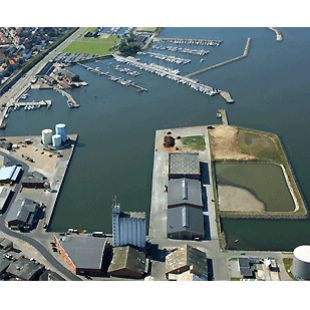Struer is a market town by Limfjorden in the western part of Jutland. Struer is one of the youngest towns in Denmark (founded 1917) and currently has around 19 000 inhabitants. A Danish newspaper once named it the ‘stockbroker belt’ of western Jutland.
Its marina is the largest in Limfjorden with its industrial harbour (from 1856) being the second largest after Aalborg. The city is well known because of the Bang & Olufsen’s predominance in the town.

The city of Struer owes its growth to the railroad, which arrived in 1865 with Jutland’s first railroad line from Århus/Randers over Viborg to Skive and Struer. Before its arrival Struer was a little town, that primarily functioned as a harbour for the residents of Holstebro; but after its arrival the town grew explosively into a big city, and eventually became one of Denmark’s most important railway connection points. Although the station has been expanded several times, the central part of the well-maintained building is one of Denmark’s oldest stations.
Fact – Struer received privileged status as a merchant town in 1917.
Until the end of the 1960s Struer Station served as the headquarters for the central West Jutland administration of DSB, Danske Statsbaner (“Danish State Railways”). More than 300 DSB employees still work in Struer today.
Fact – Bang & Olufsen, Denmark’s only radio/TV manufacturer today, is the city’s most important business, and they employ almost a third of the town’s population.